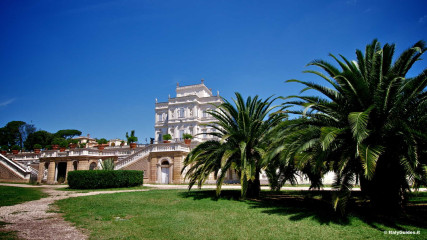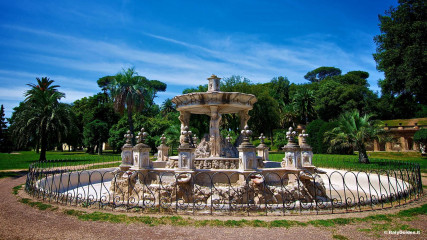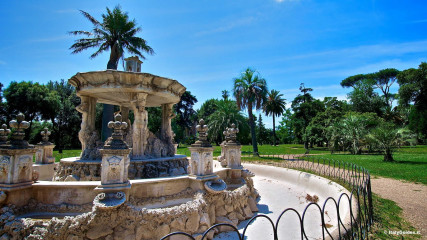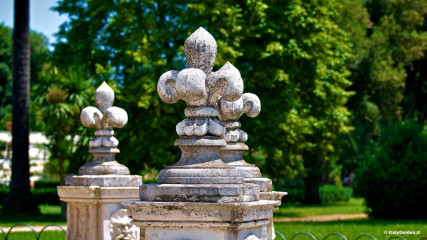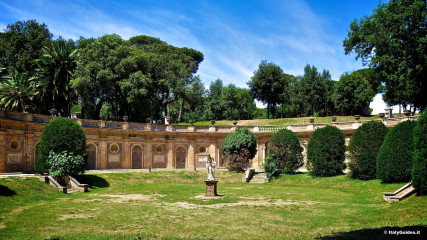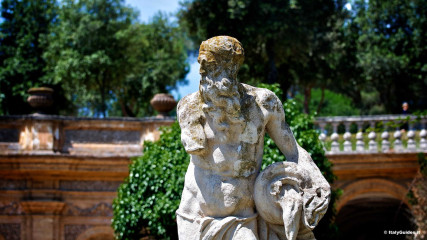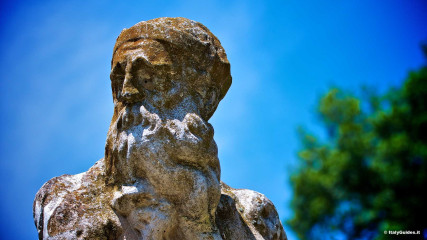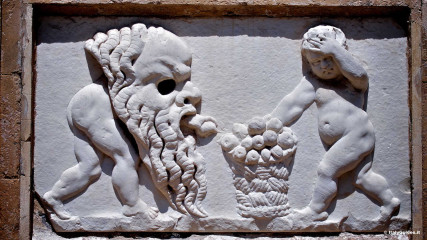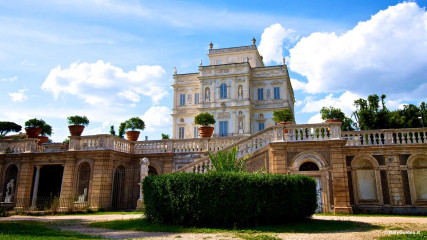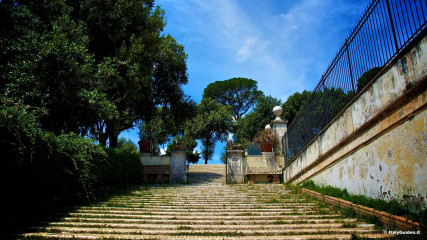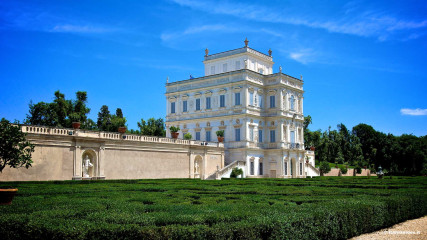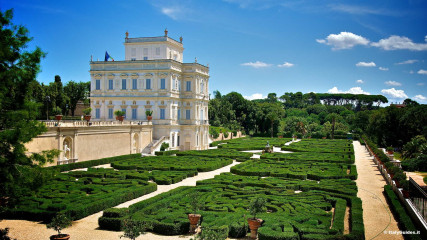Villa Doria Pamphili is a succession of surprising views and historic buildings immersed in the lush vegetation of one of the largest green areas in the city. It has a perimeter of 6.5 km and extends over 184 hectares and, in addition to being a park, it is also a splendid monumental villa, so green that it was also known as the 'Bel Respiro' (Beautiful Breath).
One of the accesses to Villa Doria Pamphili is Piazza di San Pancrazio (St Pancras's Square). This place was already talked of in the mediaeval period - the pilgrim itineraries (the old 'guides') indicated the Santuario di San Pancrazio (St Pancras's Sanctuary) to those arriving from the north. This is a beautiful church that, finding itself on a pilgrimage route, could offer a welcome to the wayfarers in its monastery; it also had a Catacomb in its crypt full of valuable frescoes.
Today, the underground cemetery contains graffiti, traces of old paintings and lots of loculi making its dark corners even more mysterious.
When the estate along the Via Aurelia was bought by Panfilo Pamphili in 1630, there was only the Villa Vecchia, the oldest building, inside it. However, between 1644 and 1652, under the papacy of Innocent X Pamphili, the architects Algardi and Grimaldi built the complex of the Villa Nuova, which became the residence of Camillo Pamphili, the Pope's nephew.
At the beginning, the villa was divided into three parts - the building and gardens (pars urbana), the pinewood (pars fructuaria) and the farm (pars rustica), but the Pamphili family had the so-called 'Casino di Allegrezze' designed and built.
This was to host parties and large receptions while the park and the 'Giardini di delizie' (Gardens of Delight) were arranged around the Palazzo where the games and pastimes of the Roman nobility were held for many years.
The scene must have been enchanting because of the incredible number of rare plants and flowers kept with such care and in such quantity that they could be used to extract perfumes, not counting the oranges, lemons, cedars and ilexes in which coloured birds of various species and from distant places nested.
The plants were in decorated terracotta vases or put directly into the ground. The scene was completed by lots of fountains, almost all designed by Algardi, fed by a Roman aqueduct that Pope Paul V had refurbished at the end of the 14th century and which took the name of Acquedotto Paolo.
Deer and fallow deer, pheasants and many other species of animals kept specially to entertain guests who went hunting, the favourite sport of the nobility, ran free among the poplars and pines in the depths of the woods and glades.
Today, after entering by Porta S. Pancrazio, the Arco dei Quattro Venti (the Four Winds Arch) is directly ahead. A little further on there is Palazzina Corsini dating to the 18th century and part of the Villa Corsini from the same century.
From here, there is a breathtaking view of the Valle dei Daini (Fallow Deer Valley) where these animals roam freely and which was cleared in 2000 after years of negligence.
The Fontana del Giglio lies beyond the pinewood, and features plays of water that flow into the Laghetto del Belvedere (the Belvedere Lake), a natural basin which underwent alterations and extensions over the years without changing the water supply. Only a recent restoration has improved the inflow and outflow of the water while the historic paths created for the beauty spots ('belvedere') have been rearranged.
The Cappella Doria Pamphili (Doria Pamphili Chapel), a little way away, was the last of the buildings constructed in the villa between 1896 and 1902. The Villa Vecchia or Casino di Famiglia, the original building, is on the side of the Via Aurelia Antica which, at this point, runs alongside the ruins of the Acquedotto Traiano-Paolo (Traiano-Paolo Aqueduct), whose material was 'reused' to build the villa.
The gardens of the Villa Vecchia were famous for the great number of citrus trees. At the end of the 19th century, they appeared to be paths with sweeping curves that enclosed various types of trees, flowerbeds in designs and many palms which gave an exotic appearance. The west part of the villa recalls the Roman countryside and is an excellent place to laze, walk or do open-air sports.
As a result of its position, Villa Doria Pamphili also has interesting archaeological remains; these include a Roman necropolis where two tombs from the Augustan age were found, decorated with splendid frescoes and which can be admired in the Museo Nazionale Romano.
The mediaeval Casale di Giovio, built on a little Roman funerary temple, is on a small hill, once more in the western part.
Villa Doria Pamphili was extended and altered in the middle of the 19th century but the villa was inexorably divided in two by the opening of a dual-carriage way, bearing the name of Leo XIII, in 1960.
In 1967, the complex was acquired by the state and Rome City Council and was at long last opened to the public. Today, it is the ideal place to laze, have a picnic, do open-air sport or simply walk in a lush, green oasis in the chaotic heart of Rome.
Casino del Bel Respiro
The Casino del Bel Respiro is one of the most beautiful buildings of Villa Pamphili, also known as Palazzina dell'Algardi in memory of the architect whose intention was to express the magnificence of the noble family. It was commissioned by Giovanni Battista Pamphili, who became Pope with the name of Innocence X.
It was the home of valuable art collections, and recreational events, parties and meetings were held there. The palace was inspired by the villas of Palladio while the furnishing and gardens recalled ancient noble residences, in particular Hadrian’s Villa at Tivoli, where Algardi used to go to study and draw.
The building has a façade on two levels on the main side and, to overcome the difference in the level of the ground, three levels on the side where the Giardino Segreto (Secret Garden) was created. This secluded and picturesque oasis was embellished by hedges shaped to form designs like the fleur-de-lys, the family crest, and many statues which also decorated the access drive to the Casino.
Two fishponds were planned along the short sides of the garden but only one was actually created. A fountain in the centre completed the scene.
The Giardino Segreto leads to the Giardino del Teatro (Theatre Garden), a semi-circular construction which hosted certain theatrical events.






